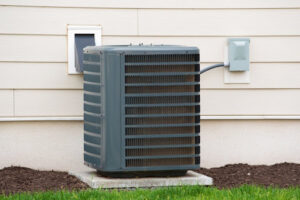
What Size Central Air Conditioner Do I Need?
When the heat of summer sets in, a central air conditioner becomes more than a luxury — it’s a necessity that stands between comfort and
The dishwasher is a lifesaver for busy families and those of us who hate doing the dishes. It’s a convenient appliance that we love and if something goes wrong with it, we feel the pain.
It may come as a surprise to you that the reason your dishes may not be coming out of the cycle completely sparkling is because your machine itself isn’t in tip-top condition. While it is known for its ability to clean your dishes, the dishwasher doesn’t always stay the cleanest itself.
Today, let’s get into the grimy details of why you should clean your dishwasher and how to do it.
Your dishwasher is responsible for washing the dishes your family eats off of, so, ideally, you’d like them to be as clean as possible!
Lingering, wet food scraps, as well as food and grime build-up on machine components, can keep the amount of circulating water down and leave an unpleasant film on your dishes.
Hard water in your home can cause mineral build-up that also limits water flow and encourages unclean dishes. A clogged drain connected or a grimy drain screen could also hinder a complete clean.
Additionally, these clogs and build-ups can create problems for your heating element. The heating element is responsible for drying your dishes as well as bringing them to the FDA recommended temperature of 171 degrees Fahrenheit. This high temperature can eliminate unwanted harmful bacteria from the dishes your family is eating off of.
Let’s open the door and get to cleaning your machine.
The sprayer arms are the rotating pieces that spin and spray water during the cycle to reach all the dishes inside. Hard water and other grime can quickly build-up on their sprayer holes, creating a clog that doesn’t allow for the full water flow to come through.
Using a toothpick, clean out the hole and surrounding area (wear a mask if you have a squeamish stomach!). Your cleaning power will be back in no time!
Located at the bottom of the dishwasher basin is the drain. Pull on your rubber gloves, reach in and clear out any left behind food that remains. Again, this can get a little icky, so be warned! There may be a detachable screen on the drain that you can remove and rinse in the sink for a thorough clean.
The door seal is not immune to the gunk and grime build-up. A dirty seal could lead to leaks, so take a damp, soapy towel and wipe it down. Do the same with the rest of the door for good cleaning measures!
The silverware basket has a lot of nooks and crannies that are a perfect spot to catch miscellaneous food bits. If left unattended, they can become moldy. Remove the basket and wash it in the sink with warm water and plenty of soap, ensuring that you get rid of anything stuck in the holes.
The filter is responsible for catching particles. A blocked filter can cause major issues like overflowing that could lead to leaks. Look at your owner’s manual to determine where your filter is located as it changes between models. Once you find it, give it a wash with water and dish soap.
For a final layer of clean protection, we recommend running your appliance with vinegar every few weeks. Do this by filling a bowl or mug halfway with white vinegar, placing it on the top rack, and running a hot water cycle. This will help sanitize your machine and loosen tough particles on the walls and components.
For additional plumbing services, make Universal Home Experts your first call. Contact us online to get started.

When the heat of summer sets in, a central air conditioner becomes more than a luxury — it’s a necessity that stands between comfort and

Every homeowner has experienced it at one point or another: the water in the sink takes forever to drain, the shower floor is covered in

Lightning strikes can be a terrifying experience for any homeowner. The powerful boom and bright flash are unmistakable, leaving you to wonder about the safety